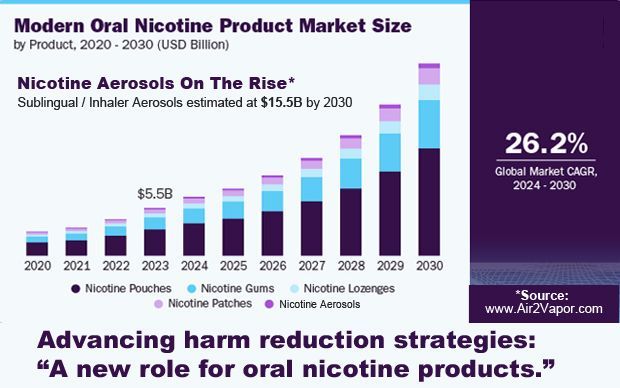Tobacco smokers switching to vaping, which presents its own health risks
More tobacco smokers switching to vaping, which presents its own health risks.
Declining numbers of tobacco smokers since 1965 are being offset by growing numbers of people vaping e-cigarettes.
Trends are seeing people looking for alternatives in a way that are not always a healthy choice. Cigarette smokers do understand that smoking tobacco can lead to a health disaster so they are looking for substitutes. Unfortunately, smokers and our youth picked another bad habit, which is vaping.
Article Summary:
- Inhaled tobacco smoke infiltrates the brain within 20 seconds — making it as addictive as opioids, alcohol, and cocaine. The nicotine results in a dopamine release that makes a person feel good. But along the way, the smoke trails down the throat, coats the lungs, constricts blood vessels and allows for plaque buildup so blood flow may be decreased to vital organs. It is a dangerous delivery system.
- Researchers have been mapping this for decades. However, smoking is still the leading cause of preventable death in the U.S. The vast majority of smokers understand the risks and would like to quit, according to the Centers for Disease Control and Prevention. While half reported trying to quit in the past year, less than 1 in 10 adults succeed in any given year. So people are looking for alternatives — and vaping is one of them.
- The CDC released a report March 6 finding that the number of adults smoking cigarettes decreased by about 6.8 million adults from 2017 to 2023 but was offset by an approximate 7.2 million person increase in adults who use e-cigarettes.
- It is well documented that 90 percent of smokers started as adolescents, reports the CDC. Those decisions are not based upon a stark analysis of facts. Instead, it is swayed by a youthful perception of “coolness,” an inexperienced burst of adventure, a moment that reduces anxiety and stress, especially for those with yet-undiagnosed addictive personalities, ADHD, and schizophrenia.
- As for vaping, early research indicates it increases risk for lung diseases, such as COPD, and a worsening of asthma symptoms. Yet, there are chemicals involved as well, and research is ongoing. In addition, e-cigarette users can buy extra-strength cartridges or increase the e-cigarette's voltage for a greater hit. If utilized, those tactics will not reduce nicotine addiction.
- The FDA is considering a proposal to reduce nicotine levels in tobacco cigarettes to make them nearly non-addictive. While many applaud such a move, others voice concerns that black market sales would increase.












